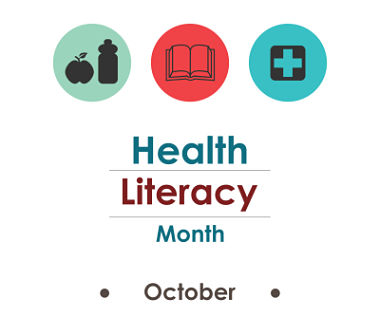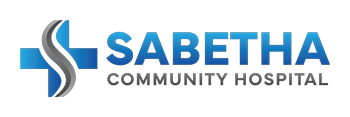
An apple, a book, and a medical cross in three separate circles over the text \"Health Literacy Month - October\"
HEALTH LITERACY - What is it and How do we improve
Health literacy is important in one's overall healthcare. The ability to obtain, read and understand healthcare information aids in making appropriate healthcare decisions and following recommended treatments. Studies show 12 percent of adults in the U.S. have proficient health literacy. Those individuals with basic health literacy can have difficulty with common health tasks including reading the label of a prescribed drug and/or following a treatment plan putting them at a higher risk for medical error. Health literacy is extremely important to promote healthy individuals.Health literacy has been defined as the wide range of skills and competencies people develop over their lifetime to seek out, comprehend, evaluate and use health information and concepts to make informed choices, reduce health risks and increase quality of life. In order for this to be possible, health practitioners must use plain language and ask their patients to teach back what they were told. Individuals will only then be better able to take action to protect their health and wellness and the health system will have better health outcomes.
Some interventions that are used to help improve health behaviors in persons with a basic health literacy include simplifying information and illustrations, avoiding medical jargon, using teach-back methods and encouraging patients to ask questions. Society as a whole, but most importantly public healthcare professionals, need to be responsible for the improvement of health literacy.
A successful health literacy program will have many goals working together to improve health literacy. Many people assume these goals should communicate health information to the general public. However, in order to be successful the goals should not only communicate with people but also take into account social and environmental factors that influence lifestyle choices. A good example is a stop smoking program. Instead of a program being put into place which talks about only the negative side effects of smoking, a program that outlines how to quit smoking, talks about the cost of tobacco, helps reduce access to tobacco by minors and talks about the social unacceptability of smoking should be program goals. The more a person knows, the more likely they are to succeed in changing their habits.
Providers need to identify risks in patients with basic health literacy and have their healthcare information tailored to the patients' understanding. When a patient is informed of issues in a language they understand, results have shown that their health behaviors drastically improve. These improvements have been seen in correct medication use and dosage, utilizing health screenings, increased exercise and smoking cessation. Visual aids need to be helpful in supplementing the information communicated by the doctor. It is also been shown that by asking simple single item questions, such as "How confident are you in filling out medical forms by yourself?" providers are learning how their patients feel about interaction during their care provided and if they understand their own health conditions.
In order to get the most complete care from your provider, be sure that they explain things to you, the patient, in a way that is easy for you to understand. If you have trouble with the explanation, never hesitate to ask questions. If you have been given health information that you don't understand, contact your local physician or call Sabetha Family Practice at (785) 284-2141 to make an appointment with one of the local physicians. They will do their best to explain your health issue to you in a language that is understood by you.
